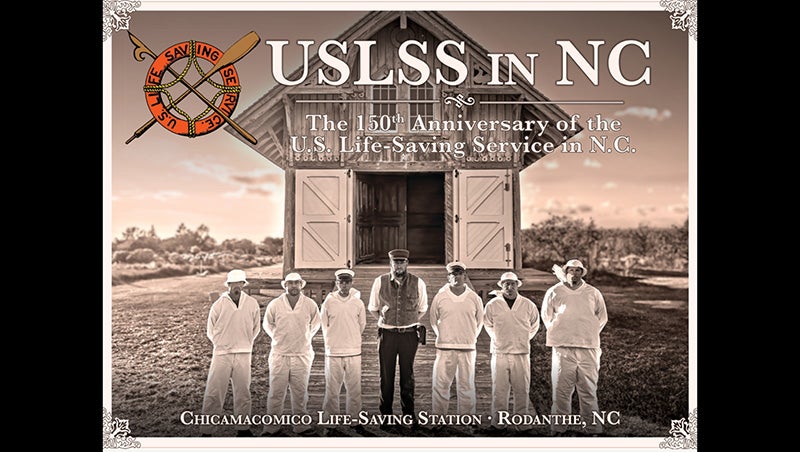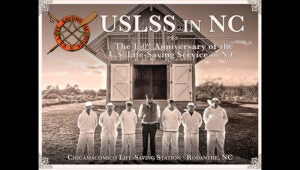USLSS in NC: A flexible manner
Published 12:33 pm Wednesday, May 22, 2024
|
Getting your Trinity Audio player ready...
|
By Jen Carlson
About 1 in the morning of January 9, 1883, the schooner Thomas J. Martin stranded about half a mile north of the Caffey’s Inlet station. The station patrolman found her on his return to the station. He lit his Coston light to notify the vessel that help was on the way and took off at a run for the station. Keeper Daniel B. Austin immediately sent up some rockets to recall the south patrolman to the station.
The darkness of the night, along with a high surf, dictated that the wreck gun along with the beach apparatus be taken to the scene instead of the surf boat. Once on scene, only the vessel’s lights on the rigging could be seen in addition to light from a periodic torch. It could not be determined how far away she was, so firing the wreck gun would be useless as the shot would be thrown at random.
Keeper Austin left one surfman on the beach to build a fire and returned to the station with the remainder of the crew to retrieve the surf boat in case the opportunity arose that it would be needed.
Upon returning to the beach, the weather had cleared slightly, and the vessel could now be dimly seen in the rising tide. A little before daybreak, the vessel shifted, and the wreck gun was quickly set and fired. The whip-line and hawser were sent out, but the seamen were slow at setting the lines. Keeper Austin made the decision to launch the surf boat as the sun was now rising and very quickly, the eight-man crew of the Martin was loaded into the surf boat and taken to shore.
A second trip to the vessel was made to retrieve most of the crew’s baggage while a third attempted to recover the shot line and furl the vessel’s spanker, or sail. Due to no assistance coming from the deck, it turned out to be impossible as the vessel was still rocked by the waves, and no one could get over her sides.
A few days later when the tides had receded, the shot line was located but it was not salvageable as it had become so ensnared with the debris around it. During the long night, the Caffey’s Inlet crew had assistance from their station cook in addition to patrolmen from both the Poyner’s Hill and Paul Gamiel’s Hill stations. The south and north patrols respectively had continued on the routes to see what was the matter after not meeting their respective patrols and ended up assisting in the rescue of the Martin crew. The vessel and her cargo were deemed a total loss.
All in a Day’s Work
Sometimes it’s about prevention: On December 23, 1892, the schooner Chautauquan found herself in need. Her mast was broken, and the crew was compelled to drop her anchor as they were also out of drinking water. Seeing her boat preparing to come ashore, the Kitty Hawk station alerted the sailors to not to attempt to land through the heavy surf. Instead, the crew went out to her to supply her crew with water and returned to shore to send a telegram requesting a tug to tow the schooner into port for repairs.
We hope you will join us October 11-13, 2024 in celebration as we recognize the #LegacyofLifeSaving and the lasting impact of these often-unsung heroes. Go to chicamacomico.org for details of the events.
READ MORE IN THIS SERIES HERE:
SUBSCRIBE TO THE COASTLAND TIMES TODAY!








